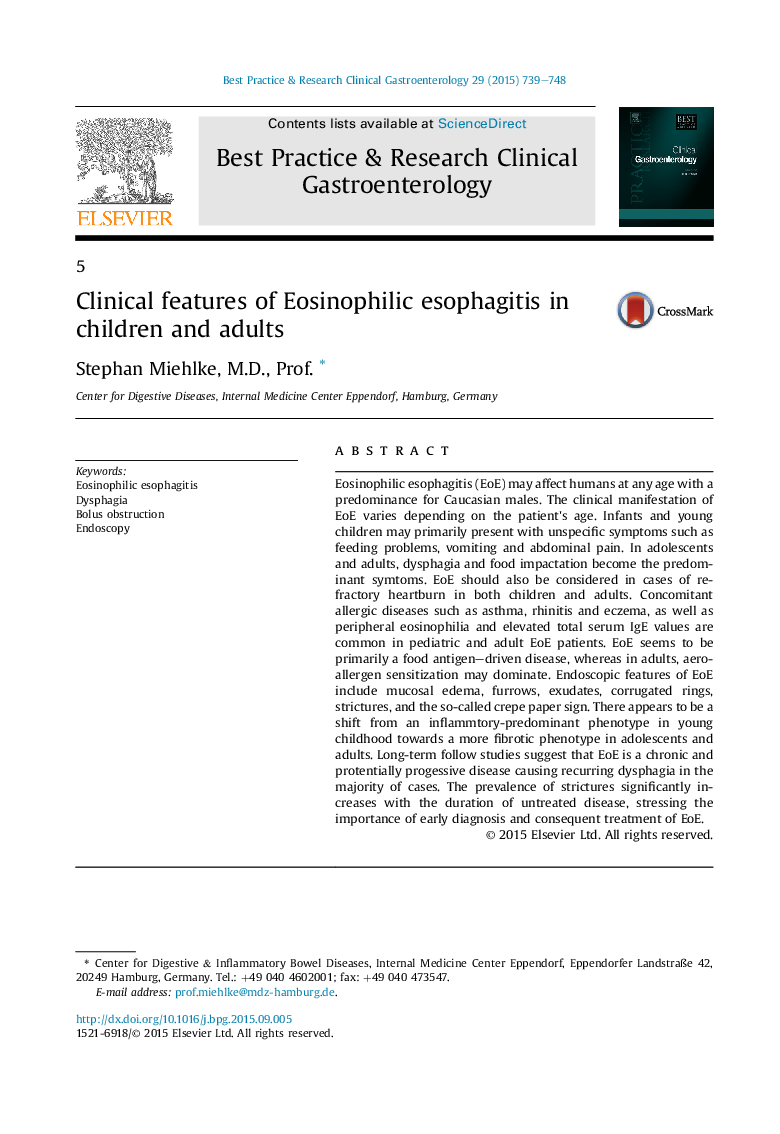| Article ID | Journal | Published Year | Pages | File Type |
|---|---|---|---|---|
| 3254053 | Best Practice & Research Clinical Gastroenterology | 2015 | 10 Pages |
Eosinophilic esophagitis (EoE) may affect humans at any age with a predominance for Caucasian males. The clinical manifestation of EoE varies depending on the patient's age. Infants and young children may primarily present with unspecific symptoms such as feeding problems, vomiting and abdominal pain. In adolescents and adults, dysphagia and food impactation become the predominant symtoms. EoE should also be considered in cases of refractory heartburn in both children and adults. Concomitant allergic diseases such as asthma, rhinitis and eczema, as well as peripheral eosinophilia and elevated total serum IgE values are common in pediatric and adult EoE patients. EoE seems to be primarily a food antigen–driven disease, whereas in adults, aeroallergen sensitization may dominate. Endoscopic features of EoE include mucosal edema, furrows, exudates, corrugated rings, strictures, and the so-called crepe paper sign. There appears to be a shift from an inflammtory-predominant phenotype in young childhood towards a more fibrotic phenotype in adolescents and adults. Long-term follow studies suggest that EoE is a chronic and protentially progessive disease causing recurring dysphagia in the majority of cases. The prevalence of strictures significantly increases with the duration of untreated disease, stressing the importance of early diagnosis and consequent treatment of EoE.
